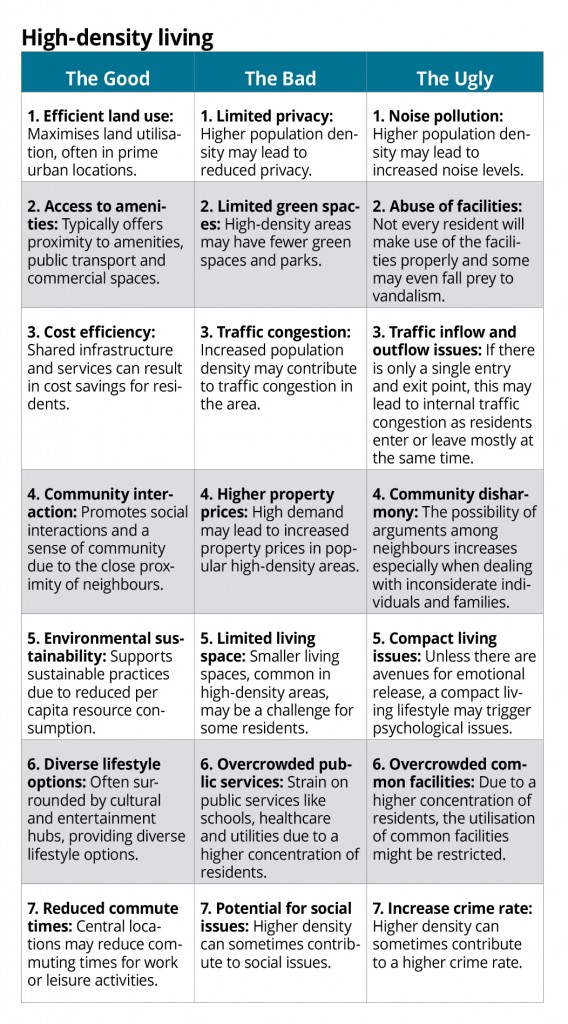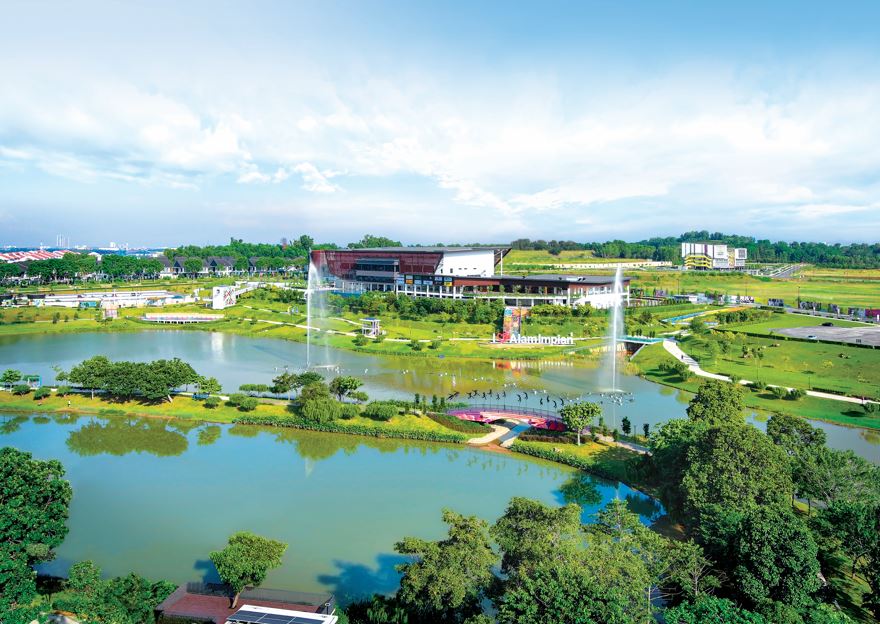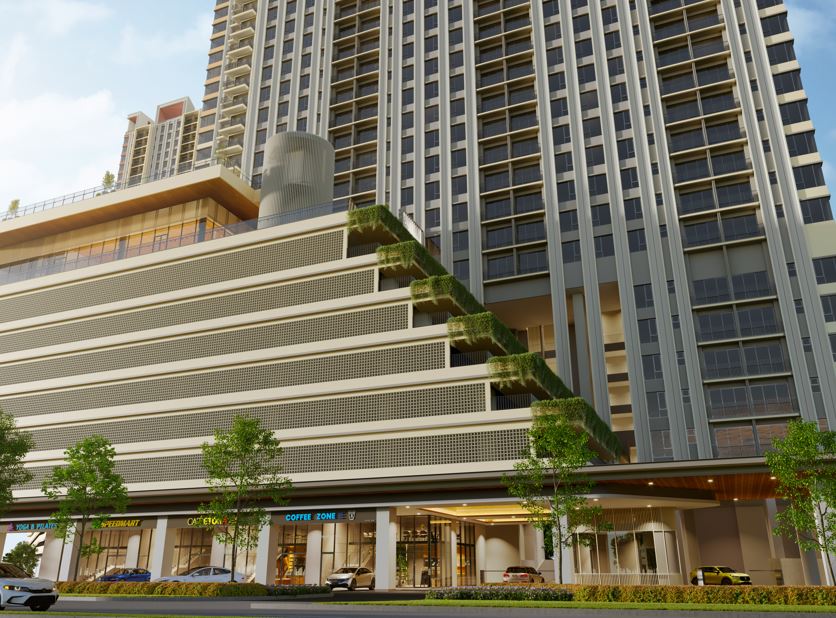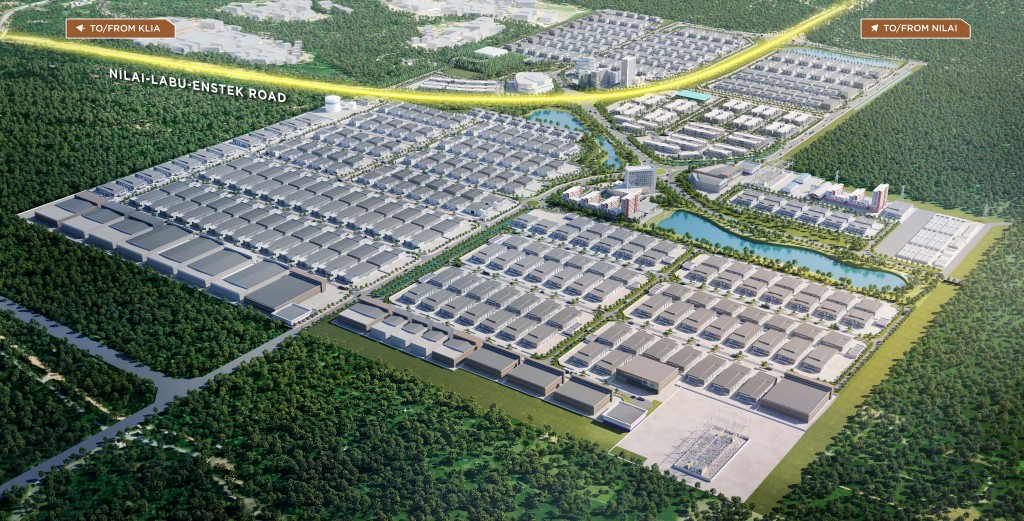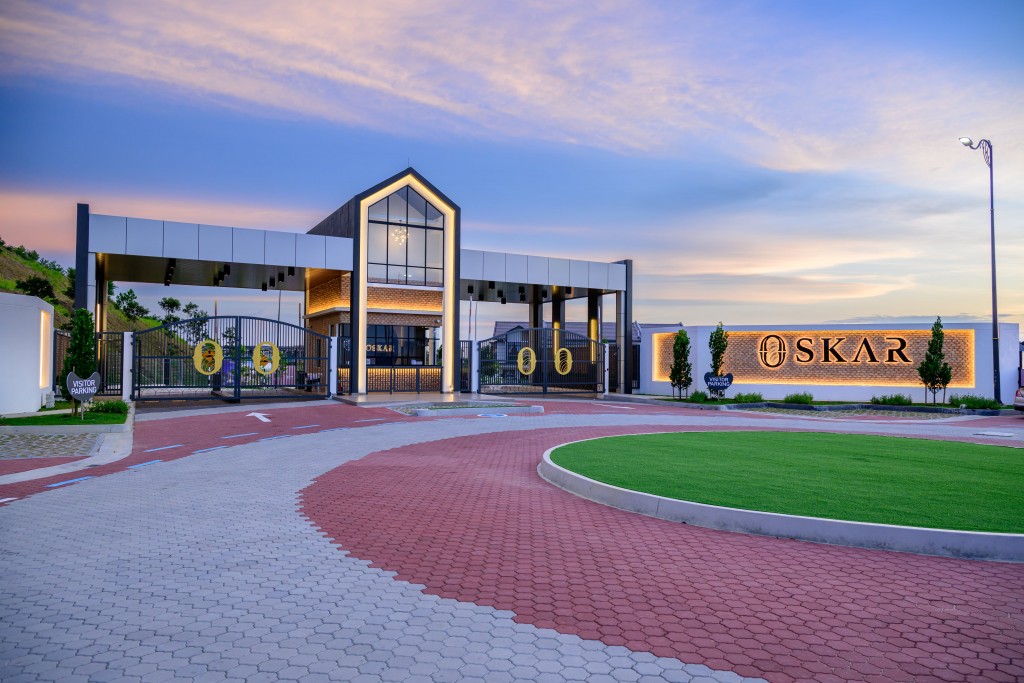By Joseph Wong
In the past, the ultimate aspiration was to own a vast expanse of land, yet the journey often involves a stopover in a compact unit, sometimes right in the heart of the city. Nowadays, with land scarcity and soaring prices, the dream of owning a spacious property may remain elusive for many.
Vertical living is no longer just a temporary phase in the journey to homeownership. In a bid to stand out in a market that can seem uniform, developers are turning to unique features like themed-condominiums, offering wellness, water, sports or even rainforest themes.
To bring these concepts to life, developers rely on increased plot ratios to create high-density integrated living spaces. However, amidst the excitement of potential buyers focused on the offerings, they may overlook crucial aspects that come with high-density living, such as connectivity and a well-planned, integrated development.
The question remains: Are these buyers truly receiving the value they expected for their investment?
It is unfortunate that a chunk of high-density developments lack proper planning and design so buyers should exercise caution and investigate the developer's track record in previous projects before committing to a purchase.
While high-density living may be suitable for city centres, not all developments live up to expectations or worse, fail to deliver the promised facilities. Despite the common belief that maintenance charges are lower in high-density projects, this isn't always the case, especially when there are numerous lifts and areas with high electricity consumption.
To create a livable environment in high-density projects, planners must enhance the living conditions with quality public infrastructure and facilities alongside housing opportunities.
This underscores the need for an integrated approach in urban management for high-density development to succeed. In Hong Kong and Singapore, housing projects and public transportation are strategically planned to ensure mobility remains unaffected despite population increases. For instance, Jurong East in Singapore, situated in the suburbs, seamlessly connects to the Central Business District (CBD) and downtown areas.
The same can’t be said for Malaysia where housing projects and public transportation are often fragmented, largely due to the different states and government agencies having jurisdiction over property development in their respective areas.
And while there is a growing popularity of Transit Oriented Development (TOD) in Malaysia, particularly with the growth of mass rapid transport (MRT) services, unfortunately most TODs in the country are on smaller plots of land and lacking large-scale township developments with well-planned transportation systems. Moreover, many TODs are individual projects by developers capitalising on their proximity to transit systems.
The defunct Kuala Lumpur City Plan 2020 and Selangor Structure Plan 2035 identify areas within a 400m radius of a transit station as TODs, encompassing stations such as light rail transit (LRT), KTM Komuter, monorail or Rapid Bus stations. What is amusing is that many developments that are beyond that 400m distance are also claiming to be TODs.
TODs represent designated zones where more intensified development is permitted, allowing for higher density and plot ratios to accommodate increased population and employment, supporting public transport travel. But many developers have seized upon these criteria to enhance the plot ratio of their projects.
Merely situating a development near a transit station does not automatically qualify it as a TOD. Essential elements such as mixed-use developments comprising residential, commercial, employment opportunities and public amenities must be evident to meet TOD criteria.
Laws also mandate pedestrian-friendly street networks and a diverse range of housing types and densities at different price points for an area to be officially designated as a TOD, making it eligible for higher plot ratios.
Typically, proposals altering plot ratios and increasing area density necessitate local authorities to provide and maintain public spaces and transport systems to accommodate the augmented population. While examples like KL Sentral and KLCC showcase successful TODs, many areas are still in progress. Emerging TOD growth areas include Sungai Buloh, Shah Alam and Subang Jaya where the public transportation connectivity has improved.
Moreover, the cost of land typically dictates the development direction of a plot. Driven by profit motives, developers are inclined to maximise land utilisation by constructing as many units as possible, particularly when the land costs are high. In such cases, the project's viability hinges on implementing a high-density development.
As land is a finite resource with unlikely prospects of decreasing in price, the trajectory of development is likely to trend towards higher density rather than lower in the future, given the diminishing availability of such resources.
Outside of Greater Kuala Lumpur, other states are also grappling with higher density projects in the state capitals. For example, in Sabah’s capital Kota Kinabalu, condominiums, which were once four to five stories high, progressed to around 10 stories, and today, they stand at approximately 50 stories in height.
Similarly, in Kuching, Sarawak’s capital, the proliferation of condominiums has become somewhat of a local joke, especially when considering the lack of public transportation to link these high-density projects. With car ownership as high as 4.6 per household (incidentally the highest in Malaysia), there is never enough parking space available leading to illegal roadside parking and congestion where condominiums reside. A fun fact is that the number of cars in Sarawak verily nearly matches the number of Sarawakians, according to Sarawak Data figures.
High-density vs low density living
On a positive note, it is observed by many industry experts that high-density condominiums have an advantage in offering facilities that align with current trends, enhancing the overall quality of life. Beyond traditional amenities like swimming pools, modern tenants seek facilities like co-working or co-living spaces, which may not be feasible in low-density condos.
Moreover, high-density condominiums are often favoured by investors who intend to rent out their properties. On the other hand, those buying for personal residence tend to gravitate toward low-density developments, attracted by fewer occupants, enhanced security and a more family-friendly environment.
In areas like KLCC, there is a trend of foreigners purchasing properties for business trips or staff accommodation due to the central location and city amenities' convenience. Potential buyers are advised to conduct thorough research, emphasising the importance of understanding a developer's reputation, particularly if they shift from low-density to high-density projects.
And since high-density developments are typically situated closer to the city, commute times are reduced. The benefits of higher density in terms of cost savings in maintaining common areas due to economies of scale. However, in cities like Kota Kinabalu and Kuching where public transportation is limited, extra considerations are needed, particularly for investors.
While some prefer low density for a quieter and less problematic living environment, the price per unit tends to be higher in such projects. With the same land cost, developing more units can lead to lower prices per unit.
Regardless of the density, developers should place importance on energy-saving features, maintenance efficiency and waste management for buyers. Investors, in the meantime, should consider long-term sustainability, focusing on factors that contribute to good rental returns and lower expenses. Finally, buyers should remind themselves that the resale value is influenced by word of mouth from residents and the effective management and maintenance of the development.
These diverse perspectives highlight the multifaceted nature of the high-density living debate. Whether it is the trend towards taller condominiums, the appeal to international buyers or the balance between facilities and privacy, the real estate landscape continues to evolve in response to economic, social and environmental factors. As buyers navigate this dynamic market, at the end of the day, they should rely on thorough research, consideration of developer reputation and a focus on sustainability emerge as key elements in making informed real estate decisions.
Stay ahead of the crowd and enjoy fresh insights on real estate, property development, and lifestyle trends when you subscribe to our newsletter and follow us on social media.


